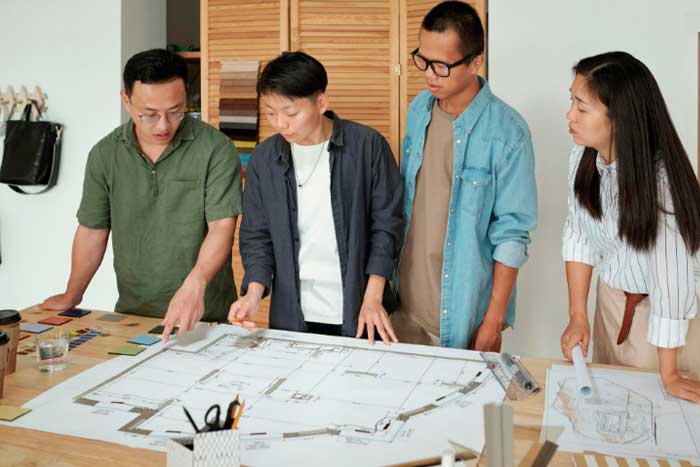Architecture shapes far more than skylines—it influences how people live, connect, and thrive within their surroundings. According to Eric Wippman, a well-planned design can encourage social interaction, support health and safety, reflect cultural identity, and even promote local economies. In both urban and rural settings, the finished product becomes a canvas for community values and aspirations. When architects and residents work together, the result often transcends aesthetics to foster resilience, inclusion, and belonging.

Architecture’s Community Impact
Architecture plays a central role in shaping how people interact, move, and live within their communities. From city blocks to rural towns, the layout and design of buildings, streets, and public areas influence everything from social behavior to access to resources.
A well-designed neighborhood can encourage walking, support local businesses, and promote spontaneous social interactions. In cities like Portland and Copenhagen, infrastructure supports convenience and deeper community ties by integrating public transit, bike-friendly routes, and mixed-use developments.
Creating Spaces That Bring People Together
Thoughtful architecture has the power to create natural meeting points where people feel welcome and encouraged to connect. Neighborhoods designed with open plazas, wide sidewalks, and inviting benches make it easier for residents to engage with one another throughout the day. When people feel comfortable in public spaces, social bonds naturally begin to form.
In many communities, features like community gardens, pedestrian-friendly streets, and multi-use civic spaces have become gathering places that support both planned events and everyday encounters. These elements foster a sense of inclusion and help reduce social isolation, especially in densely populated areas.
Designing for connection means considering how people move, pause, and share space. Whether it’s a library that doubles as a social hub or a park surrounded by homes, the layout can subtly shape how relationships form and grow.
Reflecting Local Culture and Identity
Architecture can act as a mirror of identity. By incorporating traditional building techniques, local materials, and regional design styles, communities can celebrate their history while creating spaces that feel deeply rooted and familiar.
In areas with strong cultural narratives, such as New Orleans or Kyoto, the architectural choices reflect generations of heritage. Buildings become more than structures—they tell stories, evoke pride, and preserve a shared memory among residents. Unique rooflines, ornamental details, and spatial arrangements often carry meanings that resonate with local customs.
When communities are invited to contribute ideas during the design process, the outcome often feels more authentic. Whether through murals, culturally significant motifs, or layouts that support traditional customs, architecture becomes a tool for honoring the people who inhabit the space.
Promoting Health, Safety, and Well-Being
The design of neighborhoods and buildings has a direct impact on how people feel, both physically and mentally. Access to natural light, fresh air, and green spaces can reduce stress and improve daily mood. Thoughtfully planned layouts encourage movement, whether it’s walking to a nearby shop or spending time outdoors.
Cities that prioritize safety through lighting, visibility, and traffic calming measures tend to see stronger community engagement. Even small design choices—like wider sidewalks or the placement of windows—can influence how safe and comfortable a space feels.
Supporting Economic and Environmental Resilience
Architecture plays a vital role in building communities that can adapt and endure. Mixed-use developments that combine housing, retail, and green areas often support local economies by attracting foot traffic and reducing reliance on cars. This kind of design strengthens small businesses and creates vibrant, walkable areas.
In places facing climate challenges, such as coastal cities or wildfire-prone regions, resilient designs have become essential. Using materials that withstand extreme weather, integrating renewable energy systems, or elevating buildings above flood levels can help communities recover more quickly and reduce long-term costs.
Sustainable architecture also means considering how a space will change. Flexible interiors, modular components, and energy-efficient systems allow buildings to serve different purposes over time without major overhauls.
Collaborating with the Community
When residents are invited into the planning and design process, the results often reflect their true needs and aspirations. This collaboration builds trust and leads to spaces that feel meaningful and inclusive, not imposed or out of touch with local rhythms. Involving the community early on also helps anticipate potential issues before construction begins.
Workshops, surveys, and open forums allow designers and city leaders to listen and respond to real concerns. Involving youth, elders, and underrepresented voices ensures the final result supports a broader spectrum of the population. These engagements also tend to boost civic pride and participation long after the project is completed.
Partnerships between architects, community members, and local governments create a stronger foundation for long-term success. When everyone has a stake in the outcome, the build becomes not just a backdrop, but a shared achievement.
